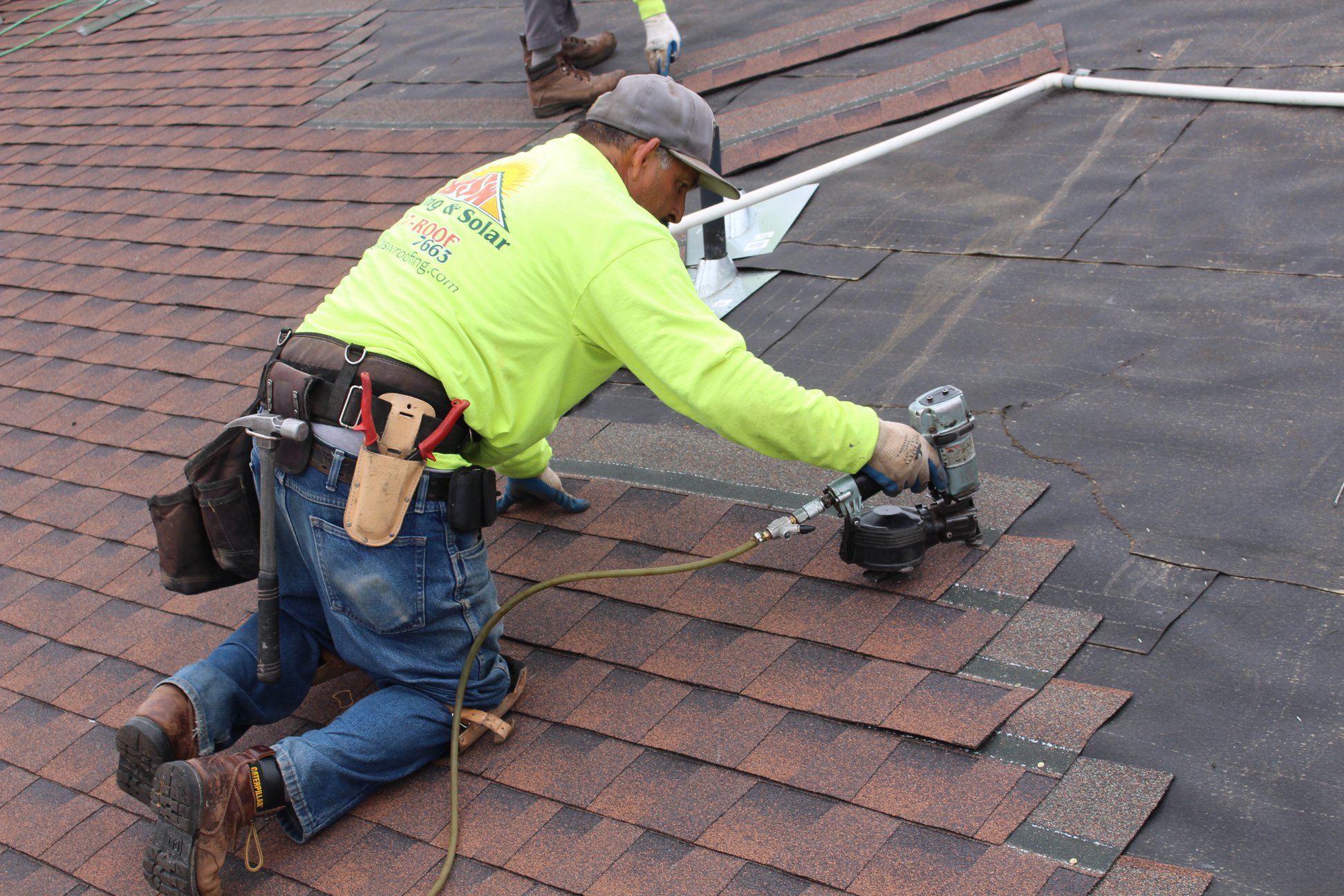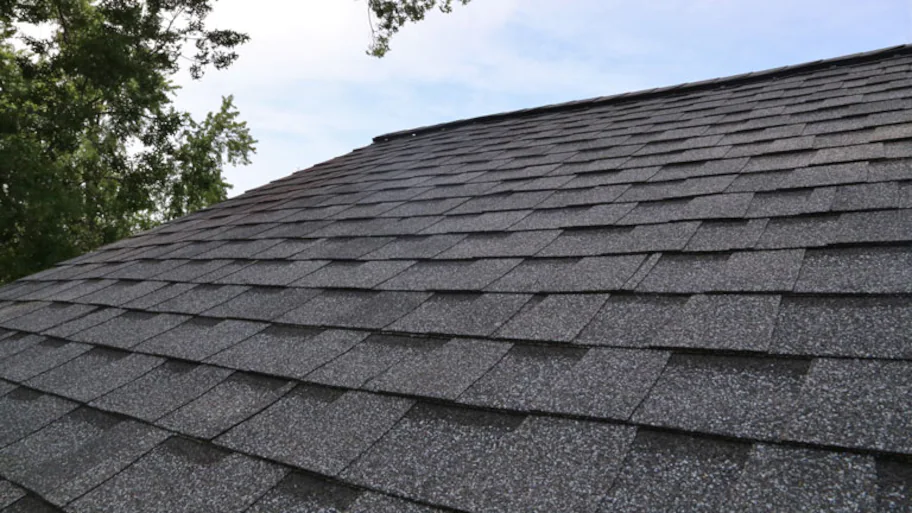A Comprehensive Check Out Roofing Companies Gainesville Locals Recommend
A Comprehensive Check Out Roofing Companies Gainesville Locals Recommend
Blog Article
Finest Practices for Ensuring Proper Roof Air Flow
Making sure appropriate roof covering ventilation is critical for the long life and efficiency of a roof. A balanced intake and exhaust vent ratio, commonly 1:300, plays a pivotal duty, with consumption vents ideally placed at the reduced side of the roof for cool air entry and exhaust vents at the top for warm air leave. Routine evaluations to identify blockages and preserve clear air flow are extremely important. Furthermore, maintaining insulation away from vents is important to stop air movement limitation. Recognizing these fundamental elements sets the phase for even more in-depth understandings right into installment and upkeep techniques that can substantially improve your roof covering system's efficiency.
Understand Ventilation Basics
Correctly understanding ventilation basics is vital for ensuring the durability and efficiency of roof. Efficient ventilation minimizes moisture accumulation and temperature level extremes in the attic, both of which can cause significant architectural damage in time. A well-ventilated roof helps in protecting against common concerns such as mold growth, timber rot, and ice dams, which can endanger the stability of the roof products and the underlying frameworks.
The main goal of air flow is to promote the activity of air, permitting a regular exchange between the outside and indoor settings. This equilibrium is accomplished via a combination of intake and exhaust vents that interact to preserve optimal airflow. Intake vents, normally situated along the eaves or soffits, enable fresh air to go into the attic room room, while exhaust vents, often situated at or near the roofing system ridge, make it possible for warm, moist air to run away.
Key variables influencing the efficiency of roof covering air flow include correct positioning, ample sizing, and ensuring that both consumption and exhaust vents are unhampered. Regular examination and maintenance are critical to determine prospective clogs, damage, or ineffectiveness in the air flow system, thus protecting the roof covering's efficiency and resilience.
Kinds Of Roof Covering Vents
Roofing system vents play an important duty in maintaining reliable attic ventilation and, by extension, the general wellness of the roof covering system. Various types of roof covering vents are readily available, each with one-of-a-kind advantages customized to particular roofing needs.

Soffit vents are mounted under the eaves and operate in tandem with roof covering vents to make certain a balanced intake and exhaust system. By permitting cooler air to get in from below, soffit vents promote the expulsion of hot air via top vents. Gable vents, located on the exterior walls of the attic room, offer an additional efficient remedy, specifically in homes with saddleback roofs.
Evaluate Your Existing Ventilation

Following, consider the age and problem of your roofing products and ventilation elements. Older systems might not conform with present building regulations or may have weakened gradually, decreasing their efficiency. Conduct a comprehensive assessment to determine any type of signs of damage, such as rust, damages, or spaces that might compromise the system's performance.
Additionally, measure the attic room temperature and moisture levels. High temperatures and humidity can indicate insufficient ventilation.
Installation Best Practices
Effective setup of roofing ventilation Web Site systems is paramount for making certain optimum efficiency and durability. Proper installation begins with understanding the particular ventilation needs of the building and the roof it covers. This includes calculating the proper proportion of consumption to tire vents, usually sticking to the 1:300 guideline, which stipulates one square foot of air flow for each 300 square feet of attic room flooring space.

The placement of vents is just as critical. Intake vents must be installed at the roofing's reduced side, typically in the soffits, to allow great air to go into. Exhaust vents, on the various other hand, ought to be mounted near or at the roof's peak to help with the exit of warm, moist air. This develops an all-natural air flow that helps keep temperature level and dampness equilibrium within the attic room area.
Seal all air vent connections meticulously to stop air leaks and potential water seepage. Usage high-quality products and comply with maker guidelines to ensure resilience and efficiency. Additionally, integrating ridge vents with baffles can substantially boost air flow efficiency by avoiding wind-driven rain and snow from going into the attic.
Ultimately, specific setup of roofing ventilation systems mitigates possible problems such as mold growth, ice dams, and architectural damage, making sure the roof's honesty and the building's total health.
Normal Maintenance Tips
Consistency in upkeep practices is basic to guaranteeing the lasting efficiency of roof air flow systems. Routine inspections are vital, preferably executed biannually-- in the spring and fall. During these assessments, make sure that vents are free of particles, nests, and other blockages that might hamper click here for more info air movement. Look for any type of indications of dampness buildup or mold, as these can indicate improper air flow or leaks (roofing companies).
Utilize a soft brush or a vacuum cleaner to remove dirt and particles from consumption and exhaust vents. Be cautious not to damage the vent displays or louvers during the procedure.
Proper insulation is similarly crucial. Make certain that attic insulation does not block the vents, as this can seriously limit air movement. Reposition or replace it to preserve an efficient obstacle. if any kind of insulation has changed or settled.
Last but not least, change any harmed or missing out on elements quickly. Busted vents, broken tiles, or deteriorated flashing can all add to inadequate air flow and should be dealt with right away. Routine upkeep makes certain that the roof ventilation system works ideally, thus prolonging the lifespan of the roof covering itself.
Conclusion
Making sure correct roofing ventilation is paramount for preserving the efficiency and resilience of a roof. Adherence to the 1:300 intake and exhaust air vent proportion, coupled with the tactical placement of vents, is important. Normal biannual inspections, debris cleaning, and making sure insulation does not obstruct air flow are crucial techniques. Applying these best practices will certainly promote a well-ventilated roofing system, thereby alleviating prospective issues associated with moisture accumulation and excessive warm, inevitably lengthening the roofing system's life expectancy.
A balanced intake and exhaust vent proportion, typically 1:300, plays an essential function, with intake vents ideally placed at the reduced edge of the roof for great air entrance and exhaust vents at the peak for warm air leave. Intake vents, generally situated along the eaves or soffits, enable these details fresh air to get in the attic room room, while exhaust vents, usually situated at or near the roofing system ridge, enable warm, humid air to leave.
Soffit vents are set up under the eaves and job in tandem with roofing vents to make certain a well balanced consumption and exhaust system. By enabling cooler air to get in from below, soffit vents assist in the expulsion of warm air with upper vents. Adherence to the 1:300 consumption and exhaust air vent proportion, coupled with the strategic placement of vents, is crucial.
Report this page